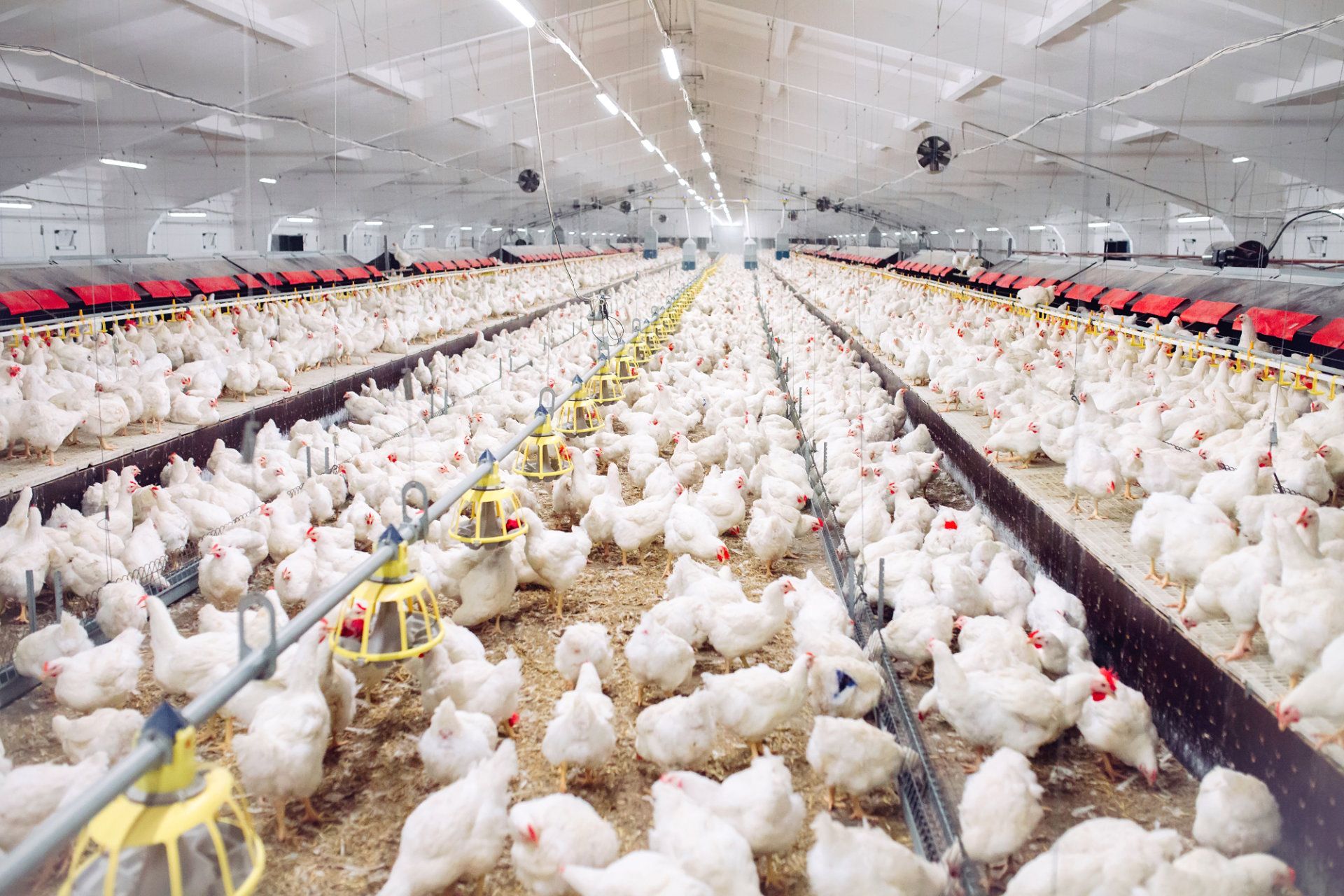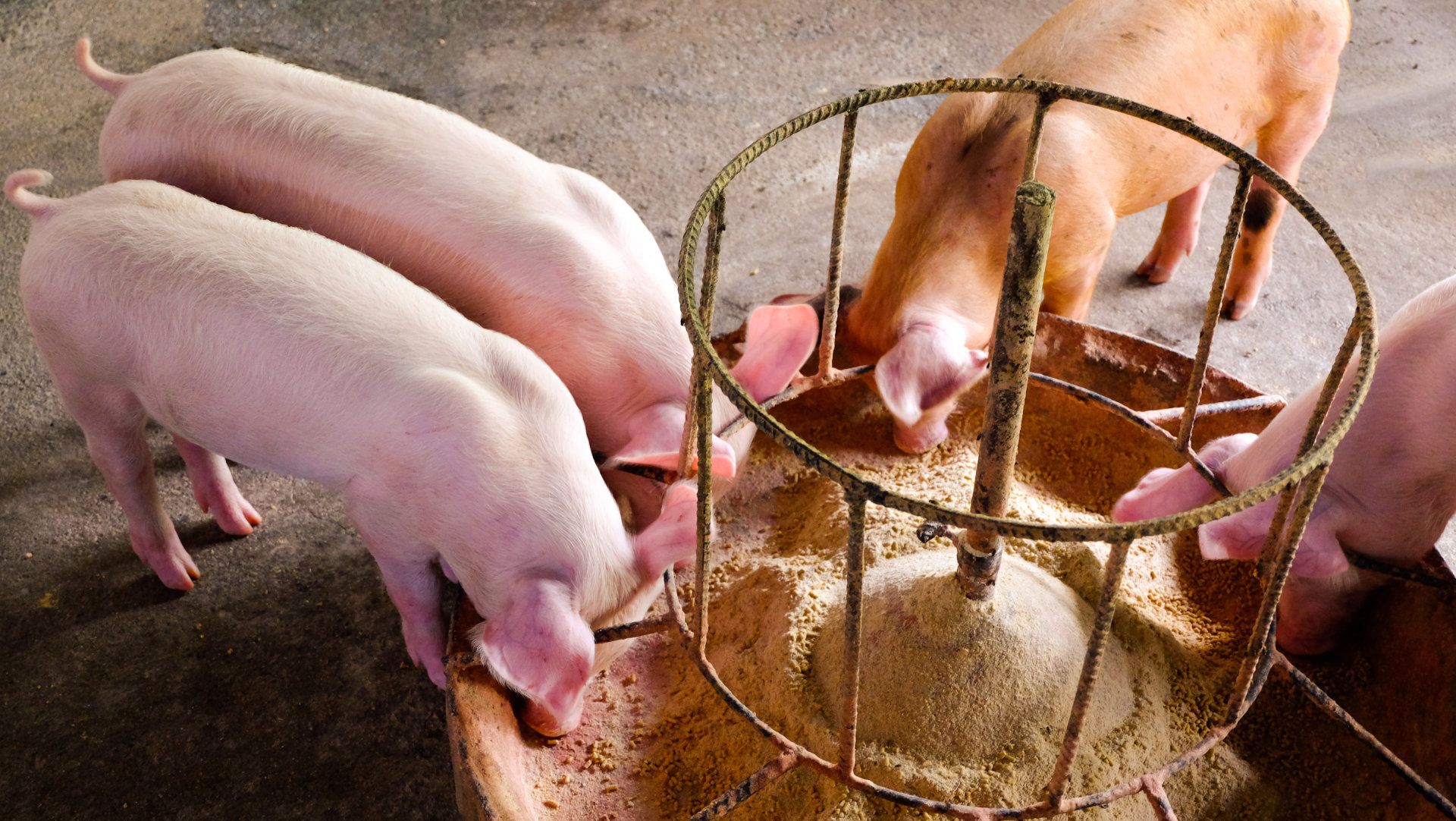Technology
Pioneering New Approaches to Animal Health
Our Approach
Our mission is to provide the livestock industry with proven technologies that harness the antimicrobial properties of peracetic acid (PAA). By leveraging this eco-friendly and highly effective compound, we aim to provide a unique and sustainable approach to the challenges posed by AMR in animal agriculture. We are working to develop, refine, and deliver these transformative technologies to empower our customers and make a real difference to animal health and farming efficiency.
PAA is a highly effective antimicrobial that offers several advantages over traditional antibiotics and disinfectants e.g. chlorine. Unlike many conventional antibiotics, PAA is effective against both bacteria and viruses. PAA at controlled concentrations is safe and does not leave harmful residues. Chlorine’s efficacy is significantly reduced in soiled conditions whereas PAA is still effective. We offer both in-water and in-feed solutions.
Transforming Poultry Production

Several farms have trialled our in-water application with excellent results demonstrating that without antibiotics there is a safe method available of producing poultry cost-effectively. Our PAA technology is generated at a safe, near neutral pH and controlled concentration. This has been related to approximately 1 log reduction in bacterial numbers in the proximal gut, delivering improvements in body weight gain and FCR. For our poultry applications, we have also pioneered an encapsulated precursor technology that allows for the controlled release of PAA in the birds’ gastrointestinal tract. Our proprietary blend of sodium percarbonate (SP) and tetraacetylethylenediamine (TAED) is encapsulated in Eudragit™ ammonio methacrylate copolymer type A (RLPO) polymer, which is then mixed into the poultry feed. Once ingested, these precursors undergo hydrolysis, forming PAA in vivo. This targeted delivery has been shown to significantly reduce bacterial concentration in the jejunum while promoting the growth of beneficial probiotic genera like Bacillus and Flavonifractor in the caeca. Moreover, our technology has demonstrated a decrease in the abundance of antimicrobial resistance genes, particularly those associated with tetracycline resistance. Poultry producers implementing our solution have also reported improved growth performance and feed conversion ratios. Our research indicates that the optimal dosing for maximum efficacy and minimal AMR selection is 30 mg/kg of PAA.
Revolutionizing Swine Health Management

In our swine applications, we have developed an in-water delivery system that administers PAA directly into the drinking water of weaning piglets via precursor hydrolysis. We rigorously tested two concentrations (50 and 150 mg/kg) against zinc oxide and a negative control, yielding promising results. Our PAA technology effectively alleviated post-weaning diarrhea symptoms within a 2-week trial period, significantly reducing the abundance of pathogenic bacteria such as Campylobacter in the stomach and Proteobacteria in the caecum. Furthermore, we observed a decreased abundance of virulence factors, notably the zonula occludens toxin, which is associated with pathogens like E. coli and C. jejuni. Our solution also demonstrated beneficial modulation of the gut microbiome and metagenome, promoting a healthier phenotype in weaning piglets. By offering a viable alternative to zinc oxide, which faces increasing regulatory scrutiny, we provide swine producers with a sustainable and effective tool to manage post-weaning challenges.
Championing One Health and AMR Mitigation
The implications of our PAA technology extend beyond the immediate benefits to animal health and performance. By reducing the reliance on traditional antibiotics in livestock production, we actively contribute to the global fight against AMR. Our solutions help mitigate the spread of resistant bacteria from animals to humans, protecting public health and promoting the “One Health” approach. By adopting our innovative feed additives, you are not only investing in the health and welfare of your animals but also taking a proactive step in preserving the efficacy of antibiotics for future generations.
By combining nanotechnology drug delivery with our chemical expertise, we have created microparticles that release high energy oxidative species (peracetic acid and hydrogen peroxide) in a safe and controlled way. We apply Thermally Induced Phase Separation (TIPS) which is a ‘dry’ process and employs freeze-drying instead of washing, to produce microparticles, loaded with oxidative precursor species tetraacetylethylenediamine (TAED) and sodium percarbonate (SP). These precursors are loaded into a polymeric matrix.
Published Research Papers
Poultry
Encapsulated peracetic acid as a valid broad-spectrum antimicrobial alternative, leading to beneficial microbiota compositional changes and enhanced performance in broiler chickens
Antimicrobial alternatives are urgently needed, including for poultry production systems. In this study, we tested the potential broad-range antimicrobial alternative peracetic acid, delivered in feed via the hydrolysis of encapsulated precursors through a 28-day study using 375 Ross 308 broiler chickens.
Precursor-derived in-water peracetic acid impacts on broiler performance, gut microbiota, and antimicrobial resistance genes
Past antimicrobial misuse has led to the spread of antimicrobial resistance amongst pathogens, reportedly a major public health threat. Attempts to reduce the spread of antimicrobial resistant (AMR) bacteria are in place worldwide, among which finding alternatives to antimicrobials have a pivotal role. Such molecules could be used as “green alternatives” to reduce the bacterial load either by targeting specific bacterial groups or more generically, functioning as biocides when delivered in vivo. In this study, the effect of in-water peracetic acid as a broad-spectrum antibiotic alternative for broilers was assessed via hydrolysis of precursors sodium percarbonate and tetraacetylethylenediamine.
Swine
Impact of precursor-derived peracetic acid on post-weaning diarrhea, intestinal microbiota, and predicted microbial functional genes in weaned pigs
Post-weaning diarrhea affects piglets in the nursery phase of production, leading to a substantial impact both at the farm and financial levels. The multifactorial etiology of this disease includes housing conditions, pig genetics, microbial composition, and metagenomic assets. Among the common therapeutic approaches, the widely used zinc oxide underwent a European Union ban in 2022 due to its negative environmental impact and correlation to increased antimicrobial resistance. During this study, we have tested two levels of inclusion of the potential antimicrobial alternative peracetic acid, delivered in water via the hydrolysis of the precursors sodium percarbonate and tetraacetylethylenediamine, in comparison to zinc oxide and an untreated control during a 2-week animal study.
Sex effects on porcine microbiota impact on alternative treatments for post weaning diarrhoea
We previously described that the broad-spectrum antimicrobial-alternative peracetic acid (PAA) derived by precursor hydrolysis was able to decrease diarrhoetic symptoms in piglets (Galgano et al., 2023), in similar fashion as zinc oxide (ZnO). Here, we further explored possible interactions between these interventions and piglet sex.
Peracetic acid to replace zinc oxide, modulating microbiota to control pig post-weaning diarrhoea
ZnO has been widely used to alleviate weaning-diarrhoea symptoms (Ou et al., 2007), however it has recently faced a ban due to environmental pollution. SP/TAED-derived in-water PAA is a broad-spectrum antimicrobial-alternative with proven efficacy in poultry (Galgano et al., 2021). In this study, we tested the PAA potential towards post-weaning diarrhoea compared to ZnO.